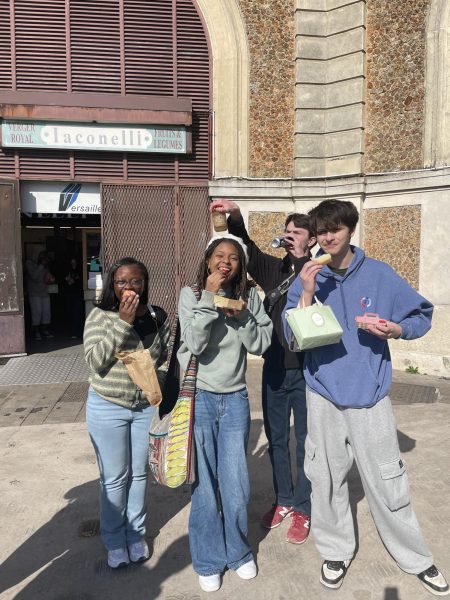The Voyager exposed
An inside look at your monthly newspaper
The Voyager consists of 27 student writers who go through many struggles throughout the one month process of making their high school’s student-run newspaper.
Sophomore Jaira Stanley is one of the Feature writers. Stanley believes that journalism can help the unknown students at H-F become known and respected.
“You make a story about a person who not a lot of people knew about, and all of a sudden people know, appreciate and respect them,” Stanley said.
Stanley focuses on being a team player so that she doesn’t negatively affect her editors and colleagues work.
“I think it’s more time management and focusing yourself, especially making sure you do it correctly and making sure that you don’t make everyone else’s life hard because you’re not being responsible,” Stanley said.
The four sections include Sports, Op-Ed, Feature and News. Each section has an editor, plus the copy editor and Editor-in-chief, that advise their sections and pages.
“Even though you’re an editor, you’re still one of the writers. You’re just one of the writers that has more responsibility than everybody else,” Op-Ed editor Jayla Jones said. “Aside from the added workload and some of the big decisions that you have to make, you’re really just like everybody else.”
Jones job is to pick and choose which Op-Ed stories will be put in a section, on a page or online. Being an opinion editor, Jones tries to write about topics that are relatable to the student body.
“Usually I try to put my stuff first so I can get it out of the way, and then I can go help others and I can give them more of my time,” Jones said.
While Jones and the rest of the editors’ job is demanding, the most stress is bestowed upon Editor-in-chief Langston McHenry. McHenry works as a teacher, since the Voyager is a student-run newspaper.
“Communicating with people sometimes can be a problem for me because of stress and the work that needs to be done,” McHenry said. “Sometimes people want their stories to be [edited] right there right now, but you have to prioritize what’s important.”
During his first year on the paper, McHenry had a shy personality when conducting interviews and felt that becoming Editor-in-chief would help him become more of an independent person for his new chapter, being college.
“Before, I settled for being mediocre in class, and I didn’t have good time management skills. So, I think being Editor-in-chief has made me ready for college because I’ll have to manage class work, social life and all of the other things I may be involved in,” McHenry said.
Advisor Glen Leyden was a professional journalist for six years before he began teaching at H-F. Leyden deals with all of the challenges that the writers have during their writing process.
“There’s a bunch of challenges that come up and they’re rarely the same each issue because different stories come with different challenges,” Leyden said.
Leyden deals with stress as well. He transitions from teaching an AP class to a student publication and tries not to get overwhelmed by all the work.
“It’s a sizable jump from teaching a traditional English class to advising a student publication,” Leyden said.” It gets especially challenging during production week when I have to juggle all of the potential problems that might come up producing the newspaper with the demands of teaching an AP class.”
In the end, all the pressure that the writers endure is worth it to them. The class is like a family and it’s really an irreplaceable experience.
“Everybody on this staff has the ability to create strong journalism. I think that the challenges I face every year are time management, motivation, and students deciding for themselves how good they actually want to be and how much they’re willing to sacrifice to make that happen,” Leyden said.






